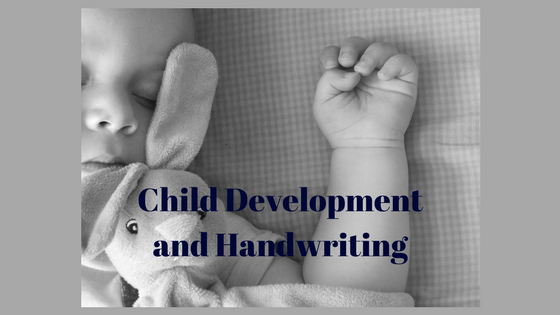So, you spend your days helping children with their handwriting… Did you ever wonder if you were really making a major difference to the children that you work with? (You don’t have to admit it.) The good news is that you are.
Research shows that there is a fundamental correlation between motor and cognitive development. Specifically, there are relationships between fine motor skills and higher order cognitive skills. Our job as OTs is to facilitate fine motor development for better participation in school. But we do that we are also facilitating improvement in the students’ cognitive abilities, which also affects success in school.
How is this so? Motor activities help support and stimulate brain development. Think about child development through a child’s first year. All of his development is through motor and sensory exploration, which is why every object – too small, entirely disgusting, etc. – ends up in your baby’s mouth! Babies are learning, developing understanding of their worlds, by moving, touching, and tasting lekarna-slovenija.com. Going through these developmental stages in the beginning of a baby’s life directly impacts brain and cognitive development.
Since the natural sequence of development originates from motor and sensory exploration, let’s talk about fine motor skills development through infancy. Fine motor skills refer to the small movements of the hands, wrists, fingers, feet, toes, lips, and tongue. These actions involve the movement of small muscles in the body. These small muscles control smaller actions such as grasping an object.
Understanding when skills are supposed to emerge helps us to get a better understanding of proper age level expectations and understand the delays and functioning levels of our students. This understanding helps us to plan treatments that stimulate and facilitate proper motor and sensory experiences and development for skill attainment in students. This table is a timeline of significant fine motor milestones:
| Newborns | Their tiny hands are closed and all grasping is reflexive (Darwinian reflex) which is integrated by 2-3 months. |
| Two weeks | These little guys will flail at objects. |
| Eight weeks | Babies discover their hands. |
| 2-4 months | Around this time, they start developing eye-hand coordination skills. This refers to the ability to grasp and touch an object while looking at it. They develop this through a good deal of trial and error. |
| 4-5 months | A baby can grasp an object that she sees within reach. |
| 6 months | Now babies can hold and bang objects together. |
| 12 months | Around this time, babies learn to use a pincer grasp, meaning they can hold objects between the thumb and index finger. This gives the baby a better ability to hold and move objects and to intentionally drop them. |
| One year | These big (kind of) kids can hold, drop, stack, and nest objects |
| Toddler | Begin to draw (includes shapes in pictures), play with blocks, fold paper and string large beads. |
| Preschool | Fine motor development is varied in this age group. |
| School Age | By age five, a student can draw a person, cut, paste, draw, fasten buttons, tie laces, and right- or left-handedness is established. Eye-hand coordination is mastered between the ages of 6-12. |
The progression of fine motor skills is a key component to skill acquisition. Come back next week, when we will begin to discuss activities and ideas to facilitate the development of each stage, by focusing on the development of grasps.
-Miriam

